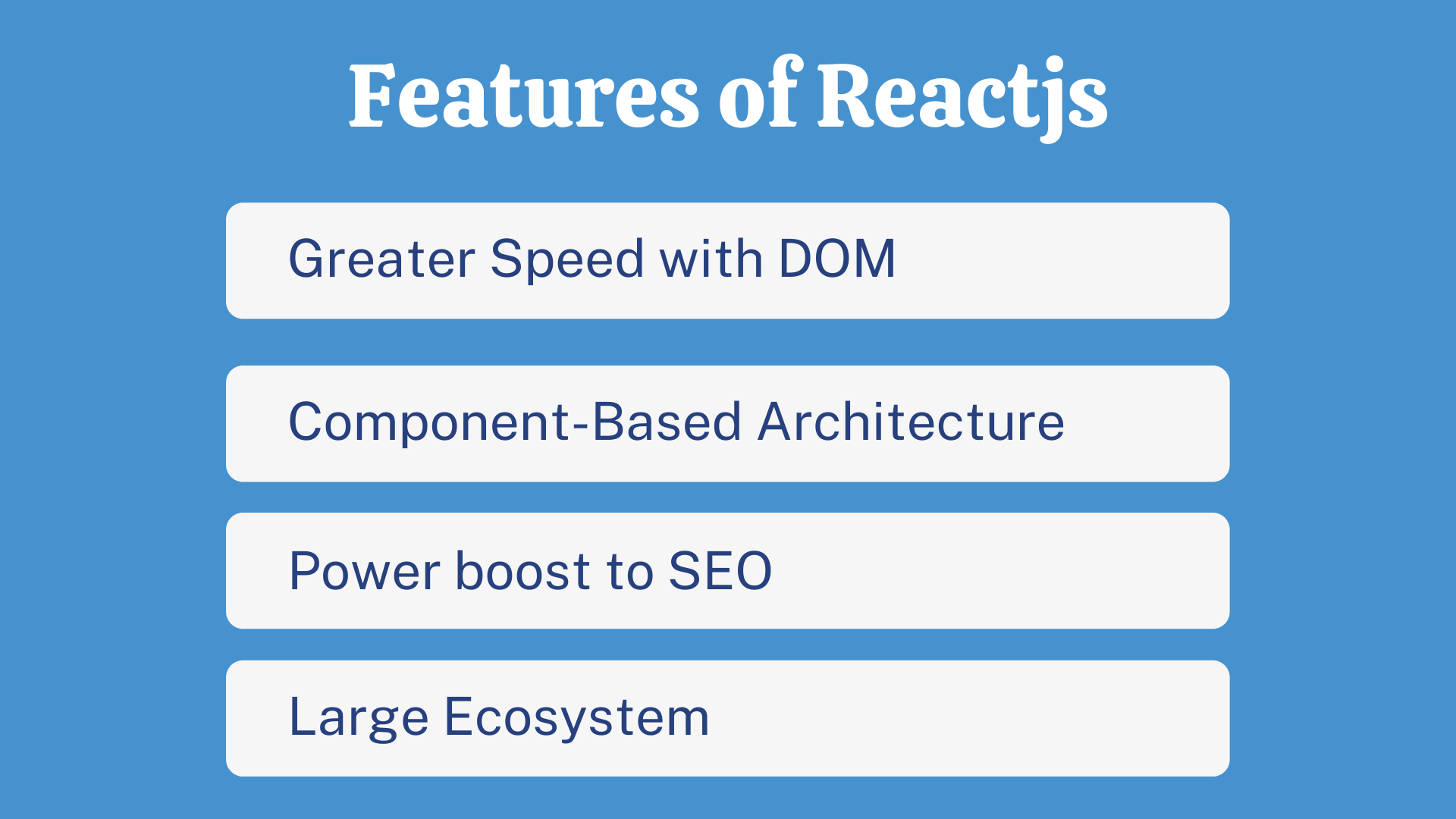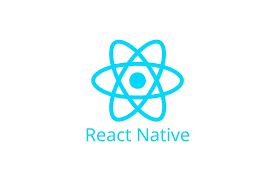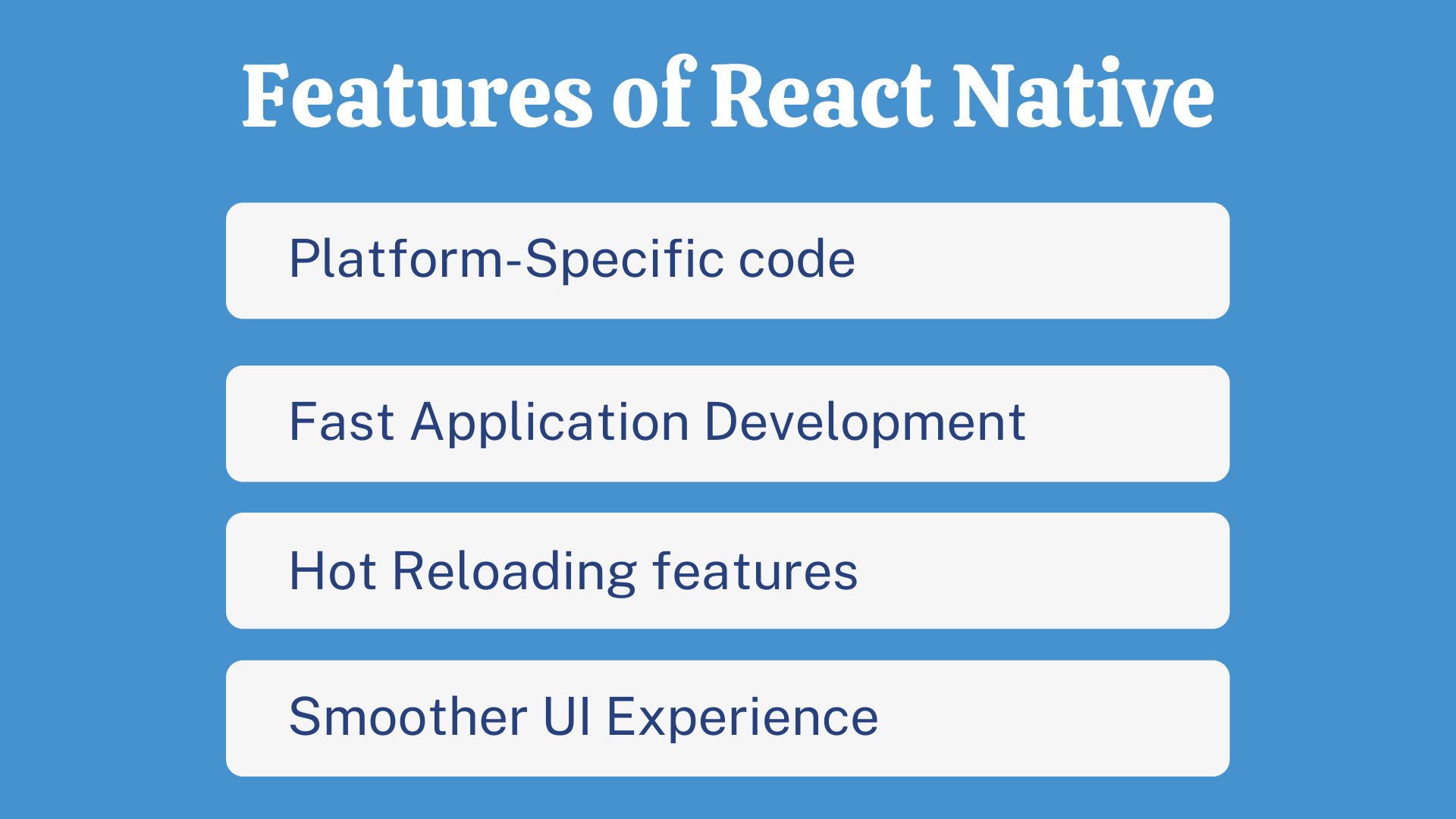Reactjs vs React Native – Differences, Advantages, and Disadvantages
May 30, 2022

Quick Summary: Are you confused about choosing between ReactJS and React Native for your upcoming project? Which one is better among them? Let’s explore the answers comparing two most popular frameworks, ReactJS vs React Native.
React (or ReactJS) and React Native have the same name for a good reason: the latter is based on the former. Facebook introduced both. Both are open-sourced frameworks using JavaScript.
However, many are still not having clarity about the clear differences between ReactJs and React Native. But it is clear that React is a web app development framework and the React Native is a mobile app development framework.
So, are you interested in knowing the critical difference between ReactJS and React Native? Which one is better among them? Let’s discover the answers in this blog comparing ReactJS vs React Native.
We will have a look into how those two technologies differ and what you should know in order to make an informed decision for your web app development. Our main aim is to take the readers through the journey of hits and misses of each platform.
Table of Contents
-
- React vs React Native – Comparing the individual features of React and React Native
- Business Advantages of Using Reactjs For Web Development
- Business Advantages of using React Native
- Limitations of using Reactjs
- Limitations of using React Native
- Reactjs vs React Native – The Difference
- What are the main differences between Reactjs and React Native?
- Which is better, Reactjs or React Native?
Reactjs vs React Native – Comparing the individual features of React and React Native
What is React?

ReactJS is an open-source JavaScript library. It can be used to build the user interface and the view layer of mobile and web applications. It allows developers to create complex UIs from a small and isolated code called “components”.
ReactJS comprises two parts: the pieces containing HTML code, components, and an HTML document – where all your components will render.
React library is designed in a way that it can integrate with existing code or other libraries effortlessly. The primary purpose of React is to simplify the process of web development that is fast, scalable, and simple.
Famous Applications Supported by ReactJS
- Netflix
- AirBnB
Key features of ReactJS

Business Advantages of Using Reactjs For Web Development
More incredible Speed with Virtual DOM
Reactjs can help your business in web and mobile application development by bringing fast speed using the virtual DOM. An in-memory data structure created by Reactjs evaluates the subsequent difference and updates the DOM displayed by the browser seamlessly.
Developers write code as if the whole page will render with each change, but only changed components are re-rendered. Virtual DOM of React refreshes only parts of the page, so it is faster than the conventional full refresh model.
This functionality gives an edge to Reactjs by increasing performance and decreasing programming time compared to another mobile app development platform.
That makes it a proper fit, as speed is one of the critical factors for making a successful mobile application.
Component-Based Architecture Saves Time
Reactjs has introduced the concept of component-based architecture to the web development arena. With this concept in place, developers can save a lot of time with the reusability of components.
This component-based architecture helps in collating an array of more extensive UI and converts them into an independent, self-sufficient micro-system.
Therefore, for example, if any component needs some significant changes within the Adset tab in Facebook Ads, only that component will be redefined and reused.
Power boost to Search Engine Optimization (SEO)
Reactjs has the capability of server-side rendering, which offers a power boost to the SEO of a web page or an application and helps in fetching more organic traffic.
When a web crawler visits a server that has already rendered the content and pictures, indexing and caching of the content becomes quicker.
It gives a massive boost to the overall SEO strategy. It can reduce the page time if Google directly indexes the content from the server-side. This fast visibility of web pages gives a better user experience.
Large Ecosystem Of Developer Tools
Reactjs has a massive community of developers who have formed a vast ecosystem of web browsers, tools, component libraries, extensions for code editors, IDEs, etc.
A community-enabled platform promotes innovation and makes Reactjs one of the most popular choices for developing dynamic websites and applications.
So, these are the significant advantages of Reactjs that make it unique.
What is React Native?

React Native is an open-source JavaScript framework. One can develop a mobile application for iOS, Android, and Windows by using React Native.
It uses only JavaScript to create a cross-platform mobile app. React is used to create the web application, while react Native is used to creating a mobile application. It uses native components as building blocks.
Facebook developed React Native for the iOS application, but now, it also supports the Android operating system.
Famous Applications Supported by React Native
- SoundCloud Pulse
- Bloomberg
- Uber Eats
Key features of using React Native

Business advantages of using React Native
Platform-specific code
One of the critical features of React Native is the ability to generate platform-specific code. When we use React Native to develop the application, the framework automatically detects the platform on which it will run. In this way, it generates the platform-specific code, the right code for the right platform.
Quick Application Development
Most of the code available in React Native is JavaScript, making it easy for front-end developers to develop an application quickly.
It is somewhat simple for a developer to learn the technology. They only need to know JavaScript, platform-centric designs, native user interface elements, and platform APIs.
The Easy Learning curve allows non-programmers to create apps without any difficulties. You can quickly get started with React Native, Even if you are not a great developer and can transform your business idea into a reality.
Hot Reloading features
Hot Reloading features of React Native give your development team the liberty to automatically reload a mobile application seamlessly. This feature of React Native makes the development process fast and saves time across the end-to-end development cycle.
Smoother UI Experience
React Native framework contains component UI libraries. Developers can use it to deliver a smooth UI experience to their users. Sharing of UI libraries like Expo, Shouten, etc., saves a lot of time required to develop them from scratch. So, you can focus on innovation. Instead of creating libraries from the start, you can focus on your business ideas.
Reactjs vs React Native – The disadvantages and limitations
ReactJS and React Native both have some limitations and drawbacks while developing web applications. So before starting on either of them, the developer should be clear with these limitations and plan to overcome them.
Limitations of Using ReactJS
Learning curve
Learning ReactJS may take much more time than React Native for a new developer. That means the learning curve for React is steeper. New developers can find an issue who are attempting to build an app using ReactJS.
View Part
React allows building only UI layers of web applications and nothing else. So, you may still have to choose some other technology to get a complete tooling set for development in the project.
Overhead Costs & Time
Often, it becomes necessary to download another react-enabled library, which increases cost and time overheads. For instance, if the developer uses the Carbon framework for UI experience, it becomes crucial to download Carbon components with react.
External library support
Although ReactJS supports many external, third-party libraries, there are very few native libraries for ReactJS. External libraries can help developers utilize HTML and CSS functionalities and build them into JSX, which has its complexities and steep learning curve.
Long data hierarchy
React has complicated data navigation. React does not support parallel data handlings, unlike other JS scripting tools. For example, if you want to navigate from one Div to another Div in ReactJS, you must first navigate to the parent node. Then navigate to the topmost parent node and then to the second hierarchy of the tree node.
Limitations of Using React Native
Lack of native libraries
React Native generally uses libraries for rendering purposes. The Performance hence depends upon third-party libraries. The development process becomes slow, and the reason is the lack of native libraries and dependency on external libraries.
The app has heavy functionalities that often require integrating external or third-party libraries as the native platforms do not support the particular feature. When one needs to make complex calculations simultaneously, then Swift, Objective-C, and Java have more speed than JavaScript since there are overheads within JavaScript to control native elements.
Abstraction layer issue
An abstraction layer is made above the native platform to create more React Native framework functionality.
Even if a single error occurs in the abstraction layer while executing the code, then you may encounter unavoidable errors and warnings in the whole application.
These errors might prove so complicated that finding them out and solving it might become a tedious task. So, that is a significant React Native limitation.
Longer Initialization Time
Another problem that React Native developers have is that it takes Longer to initialize the runtime for gadgets and devices. It happens due to the JavaScript threads, which take more time to initialize.
Requires many native workarounds
Suppose any app requires a specific functionality that is not present in React Native. In that case, developers have only two options: Either write the native modules in Swift/Objective-C and Java create an entirely new native application from scratch. That means, React Native increases overheads on expenses and time.
React vs React Native: Head to Head Comparison
Here are some fundamental points of both React and React Native. Please Have a look at it to gain clarity about the differentiating factor between them.
| React | React Native | |
| 1. | Reactjs was used for the first time in the year 2013 by Facebook for web applications. | React Native was used for the very first time in the year 2015 by Facebook for developing mobile applications. |
| 2. | ReactJS offers high-security features to build an app. | React Native offers relatively low-security features. |
| 3. | You can use the React-router for navigation purposes. | You can use the built-in navigator-library. |
| 4. | React JS offers more time efficiency. | React Native offers comparatively less time efficiency. |
| 5. | Virtual DOM is an additional feature offered by React. | React Native API is the additional feature offered by React Native. |
| 6. | It uses HTML tags. | It does not use HTML tags. |
| 7. | ReactJS uses a JavaScript library and CSS for animations. | React Native comes with built-in animation libraries. |
| 8. | React is platform-independent. | React Native is kind of not platform-independent. It takes another struggle to execute correctly on all platforms. |
What are the main differences between React and React Native?
Like there are several similarities between Reactjs and React Native, there are also some notable differences. Let’s have a look:
- React is an open-source JavaScript library. We can create the user interface for Web Applications with Reactjs. React Native is an entire platform allowing you to build native, cross-platform mobile apps.
- ReactJS uses HTML and CSS, but with React Native, you need to familiarize yourself with React Native syntax. React Native doesn’t use CSS either. That means you’ll have to use the animated API, which comes with React Native, to animate different components in your application.
- If you want to build a dynamic, high performing, responsive UI for your web interfaces, then React is perfect, while React Native is perfect for giving your mobile apps a genuinely native feel.
- In Reactjs, virtual DOM is used to render browser code, while in React Native, native APIs are used to render components in mobile.
- With ReactJS, developers use CSS for creating styling, while in React Native, they use a stylesheet for styling.
Which is better, React or React Native?
Both React and React Native are essential pillars for app and web development.
React is an open-source library, and React Native is the entire framework; React is the heart of React Native and they both complement each other.
ReactJS is ideal for creating dynamic, high-performing, responsive UI web apps with robust functionality, and React Native is perfect for creating a mobile application with a near-native look and feel.
Conclusion
Each technology or framework has some limitations, and so do Reactjs and React Native. I advise developers to check the pros and cons of both of these technologies and then make a knowledgeable decision based on the priorities and expected outcome.
Frequently Asked Questions
Can we convert React to React Native?
You cannot directly convert React to React Native but you replicate the features of React Native app to React. Moreover, no tools are available to convert the same.
How is React different from React Native?
The answer to this question is quite simple. React Native is used in the development of mobile apps for iOS, Android, and windows. On the other hand, Reactjs is used in developing web apps.
Is React Native easy if you know React?
Yes, if you know React then it would be easy to React Native or vice versa because conceptually both are similar to each other.
Is React Native frontend or backend?
Both React Native and Reactjs are for the frontend only. You will need a separate technology to build the backend for Reactjs/React Native apps.
Which database is used in React Native?
More than a dozen of options are available for React Native backends such as AsyncStorage, Watermelon DB, PouchDB, Firebase, SQLite, Realm, and Vasern.
Can we use React Native for mobile app development?
React Native is the best technology for developing mobile apps. The technology provides a smooth, lightweight user interface that reduces the load time of the app. Moreover, building a mobile app is easy compared to native coding.
What is the most important advantage of Reactjs?
The single most important advantage of Reactjs is that it allows the developer to re-use the components, thereby saving the developers time without compromising the performance of apps.

